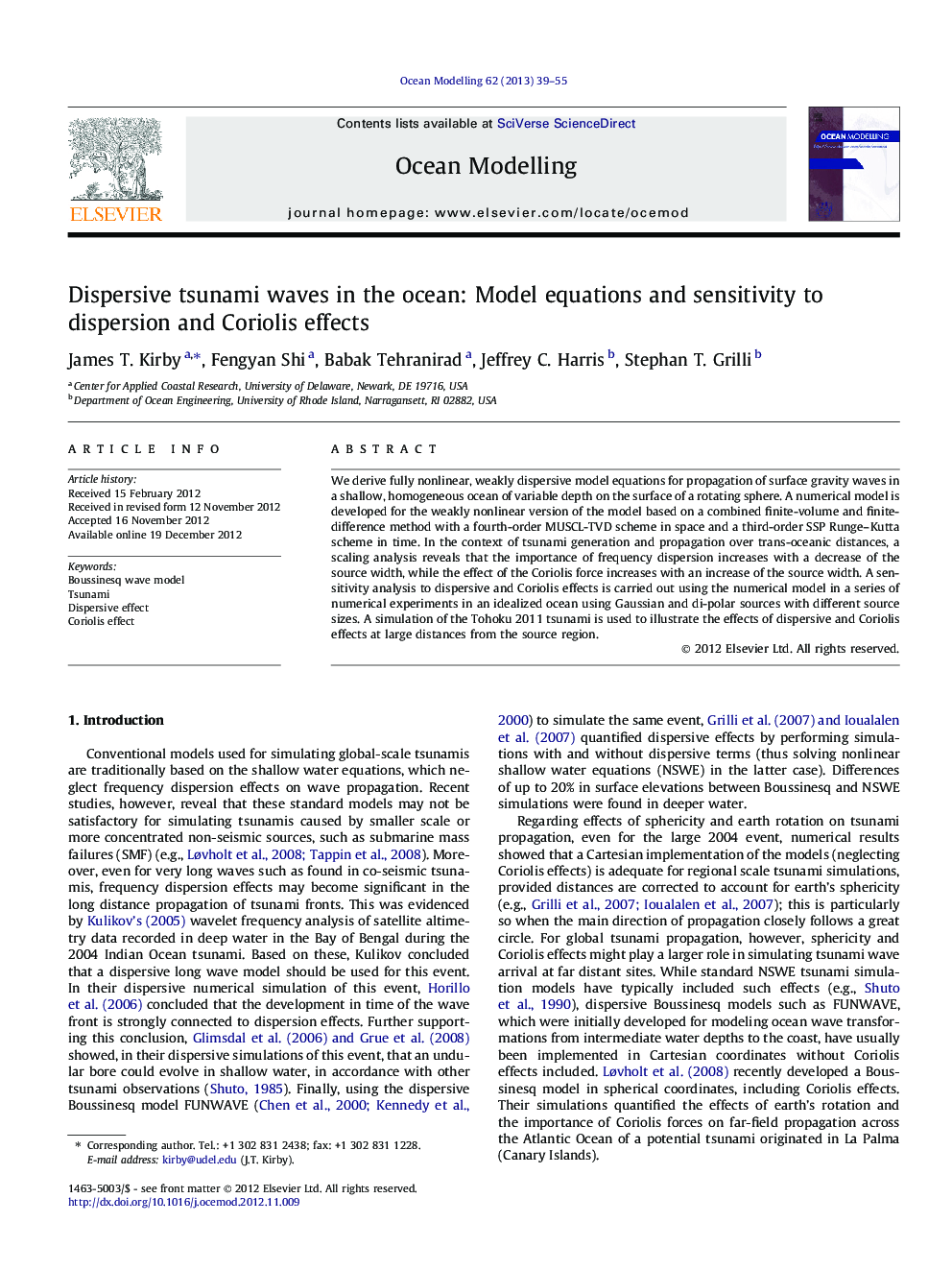| کد مقاله | کد نشریه | سال انتشار | مقاله انگلیسی | نسخه تمام متن |
|---|---|---|---|---|
| 4552137 | 1627786 | 2013 | 17 صفحه PDF | دانلود رایگان |

We derive fully nonlinear, weakly dispersive model equations for propagation of surface gravity waves in a shallow, homogeneous ocean of variable depth on the surface of a rotating sphere. A numerical model is developed for the weakly nonlinear version of the model based on a combined finite-volume and finite-difference method with a fourth-order MUSCL-TVD scheme in space and a third-order SSP Runge–Kutta scheme in time. In the context of tsunami generation and propagation over trans-oceanic distances, a scaling analysis reveals that the importance of frequency dispersion increases with a decrease of the source width, while the effect of the Coriolis force increases with an increase of the source width. A sensitivity analysis to dispersive and Coriolis effects is carried out using the numerical model in a series of numerical experiments in an idealized ocean using Gaussian and di-polar sources with different source sizes. A simulation of the Tohoku 2011 tsunami is used to illustrate the effects of dispersive and Coriolis effects at large distances from the source region.
► A derivation of a Boussinesq model is provided which examines the relative importance of dispersion and Coriolis effects.
► Each effect is illustrated by a set of idealized examples with varying co-seismic source width in a flat-bottomed ocean.
► The model’s utility is demonstrated using the 2011 Tohoku tsunami.
Journal: Ocean Modelling - Volume 62, February 2013, Pages 39–55